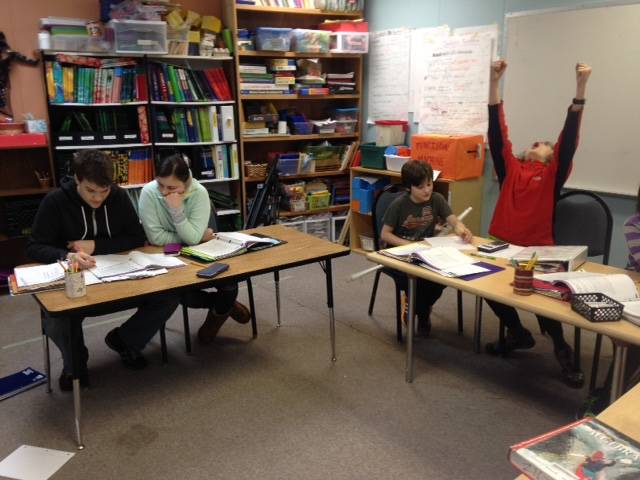Having just finished parent-teacher conferences, I reflected on my many conversations.
Not once did I hear a parent say, “Well, I was never very good at math, so I’m not surprised that she isn’t either.” These are words I often hear during conferences; they temporarily make my heart stop. Usually, I try to explain some of the research from the last 20 years about the plasticity of the brain. Researchers began by looking at victims of brain damage and their ability to re-learn many of the skills they had lost. The scientists then focused on healthy brains, and learned that we don’t necessarily have “math brains” or “art brains.” Our brains are ready and able to learn anything if we are willing to put in the practice. Additionally, those with a growth-mindset (believing that we can learn anything with practice) out-perform those with a fixed mindset (Boaler, 2013). One study even suggests that a growth-mindset intervention can help to eliminate gender and ethnicity gaps (Good, et al, 2003).
How do we help our students gain a growth-mindset? Or rather, what have we done to destroy it? Teachers and parents should be careful about messages we are sending. Do students believe they are genetically predisposed to certain talents? Does placing students in homogenous ability groupings affect their mindset? Mathematics, or any subject, takes time to learn: time to practice, to make mistakes, and to make sense of those mistakes.
I asked Miranda Hirst, one of my current AP Computer Science students, to reflect on her math journey, and how she discovered how to learn mathematics.
“When I started 6th grade, I really enjoyed math,” she said. “I was good at it, and was at the top of my class. When 7th grade rolled around, even though I was excited about Algebra 1, I quickly started having difficulty understanding the material. I stopped enjoying math as much, and by the end of the year I felt like I had barely made it through the class in one piece. I would write down what was on the board without ever really understanding what it meant. The summer before 8th grade, I was not excited for math class at all. I felt like I was not able to do math any longer, and thought maybe there was just something wrong with my brain. But my math teacher would not let me give up. I went in before school to work with her on homework. I practiced and practiced. Eventually, my love of math returned. I learned how to figure out and understand math. I learned how to problem solve. Once I arrived at high school, I had fallen in love with math all over again. Now, even if I struggle with something, I know I’ll be able to figure out how to do it.”
Everything takes practice, and practice takes perseverance. Knowing (and believing) that we can learn through both our right and wrong answers gives us the momentum to forge ahead. I am thankful that none of the 50 parents I talked with last week had the attitude that their student will never be good at math. Together, students, parents and teachers can create a growth-mindset in every classroom and in every subject.
Attributions:
Boaler, J. (2013) Ability Grouping in Mathematics Classrooms, in S.Lerman (Ed.) Encyclopedia of Mathematics Education, Heidelberg: Springer.
Good, C., Aronson, J. &Inzlich, M. (2003) Improving Adolescents’ Standardized Test Performance: an intervention to reduce the effects of stereotype threat, Applied Developmental Psychology, 24, 645-662.
• Carol May teaches Computer Science and Math at Thunder Mountain High School. Miranda Hirst is a junior at TMHS. STEM Corner is a monthly column about Science Technology Engineering and Math in Juneau, written by a rotating group of Juneau STEM Coalition members.

